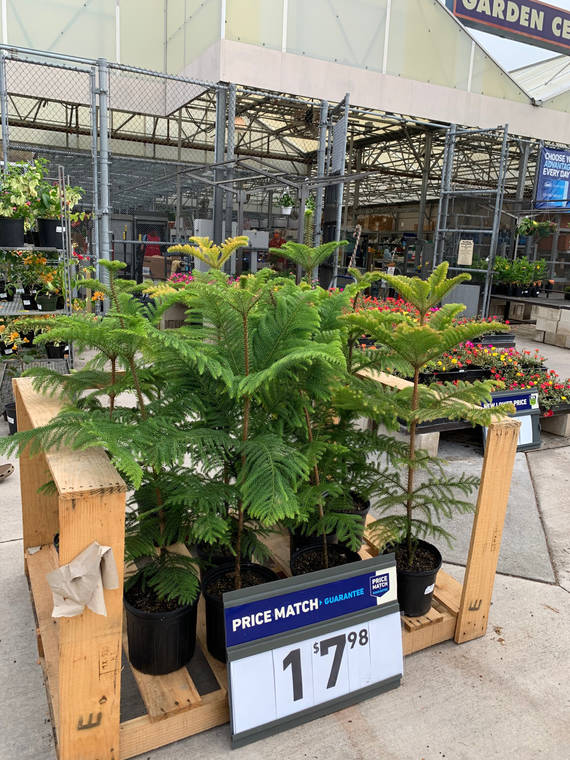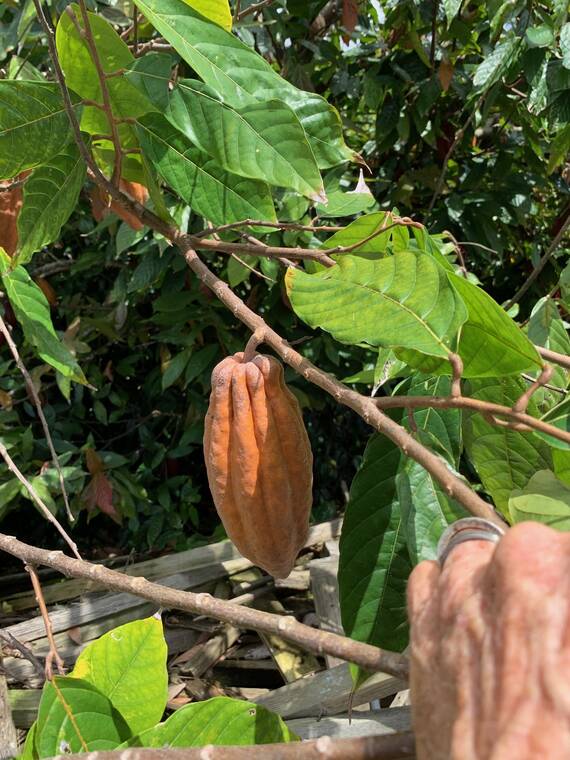Christmas is almost here, so folks are sending cards and buying and mailing gifts. But it seems like most folks are a bit slow in getting their Christmas trees up this year.
Don’t delay any longer since trees that are shipped in early are best. If you wait, the cut mainland trees will dry out and can become fire hazards. This year, almost 100,000 trees are arriving, and unfortunately some unwanted hitchhikers as well. One container arrived with slugs, a garter snake and tree frogs from the Pacific Northwest.
However, if you want to support local farmers now, you might consider a living Christmas tree.
Favorites are in the Araucaria group. There are more than a dozen species. These include the Norfolk pine, monkey puzzle pine, bunya bunya, hoop pine, Cook pine and several species from New Caledonia that are seldom seen outside their native islands.
Araucarias are not true pines but are primitive conifers. Theory has it that they were part of the tropical forests before Australia separated from New Caledonia and perhaps even South America. The common Araucaria we have in Hawaii is likely a hybrid between the Norfolk and Cook pines since trees here often have characteristics of both species.
This tree is popular as a cut tree because it stays fresh and green much longer than the traditional fir, spruce or pine. These living Christmas trees are grown in containers, and prices are quite reasonable, especially since the tree can be used year after year.
Other cut trees on the market this year are the firs, Mexican or Portuguese cypress, Monterey pine and spruce. Each of the common types of Christmas trees available has advantages that should be weighed. However, if you wait too long, remember the trees remaining might be a bit over the hill since they were probably cut quite some time ago.
Freshness is very important in selecting a cut tree. Don’t buy any tree that has browned needles. A discolored tree is beginning to dry out. Many people wait until the last minute to buy a tree so it will have a good appearance on Christmas Day and through the remaining holidays. Actually, the opposite might be true.
Conditions at stores or lots where trees are kept might not be ideal cool conditions. It is better to buy from early shipments and place the tree in a bucket of water in the garage or storeroom. Not only will it will keep better, but you will probably have a better selection if you buy early.
If you decide to cut your own tree, several Christmas tree farms are located on the Big Island. Monterey pines and Portuguese or Mexican cypress are fresh, attractive and have a “piney” fragrance. Selecting locally grown trees also helps keep dollars in Hawaii.
Cut trees may be kept longer if a little soluble fertilizer is added to the water in which the tree stands. Don’t overdo it or the tree will dry out even faster than if you used no fertilizer.
Several Big Island nurseries and garden centers are carrying Norfolk pine, Monterey pine, Mexican cypress, spruce and others as living Christmas trees. These can be planted in the garden in mauka areas. Fir, spruce and some pines require cold weather found above 6,000 feet. Mexican cypress and Monterey pine will do well and look best at 3,000-6,000 feet elevation. Araucarias, being mostly tropical, grow well below 4,000 feet. The exceptions would be with species such as the monkey puzzle pine that come from cold climates of South America.
Araucarias do not have a pine scent, so if you miss the piney fragrance check out local stores and garden shops that sell mainland pines. They will often have cut branches available at little or no cost to incorporate into your Christmas scene. As a last resort, consider pine scented room deodorants!






